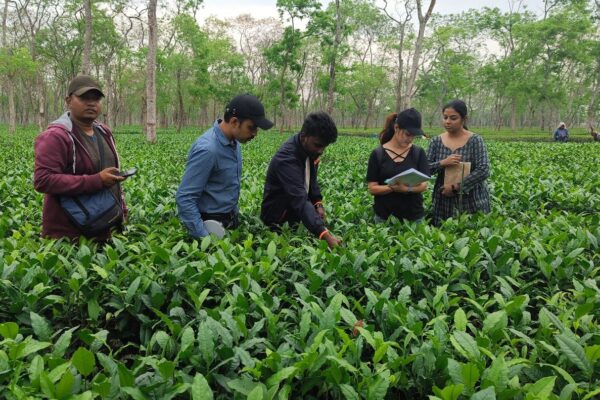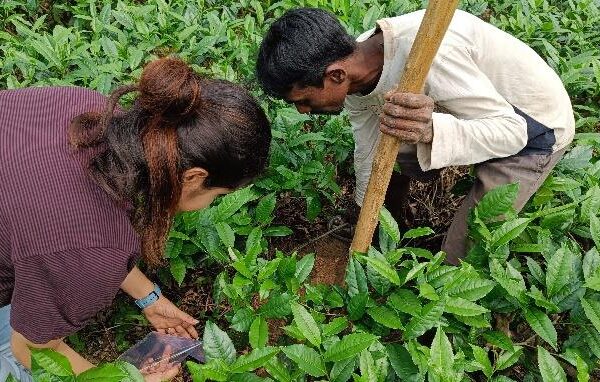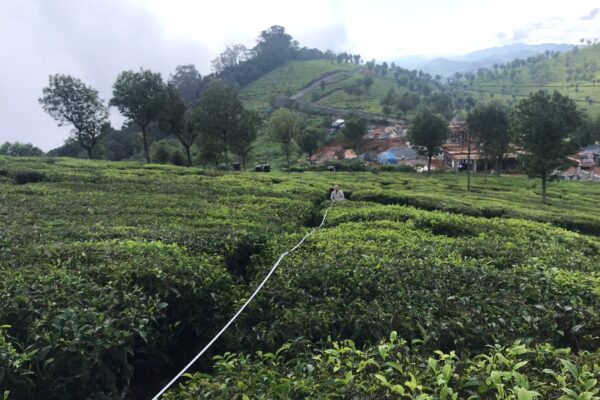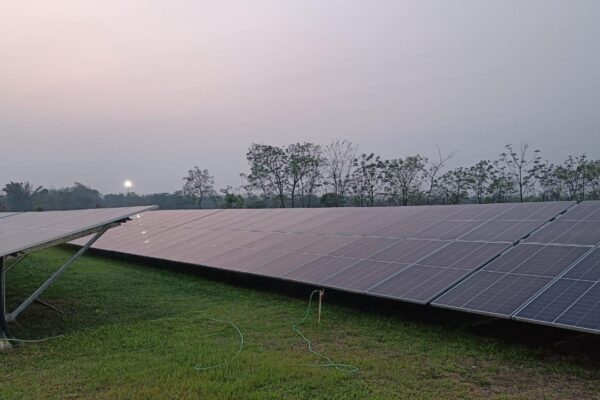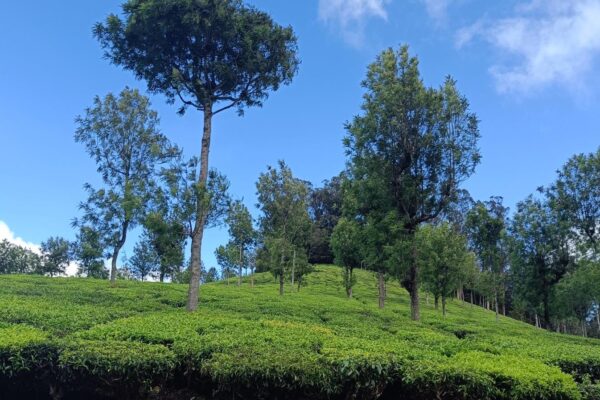Climate change is an indisputable reality marked by escalating temperatures, the disappearance of polar ice caps, and the proliferation of severe climatic occurrences. Global warming-induced climate change poses a significant threat to agricultural systems on a global scale. This phenomenon manifests through characterized through intensified periods of drought, heavy downpours, hailstorms, and frosts, climate change results in detrimental effects on rain-fed tea cultivation and overall agricultural production. Today, the tea sector substantially contributes to greenhouse gas emissions that account for approximately upto 20-25% of total global agricultural emissions. In addition to this, agricultural soils and cropping systems possess the potential to function as carbon sinks due to the ability to absorb carbon dioxide and store carbon. Given the extensive repercussions, immediate attention and collaborative efforts from individuals, governments, and organizations worldwide are essential.
 In response to these challenges, Fairtrade NAPP has initiated a comprehensive study titled “Climate Change Impact and GHG Emissions in Tea Sector – India.” Fairtrade NAPP has partnered with Geo Climate Risk Solutions Pvt. Ltd. to assess greenhouse gas emissions, examine the effects of climate change on tea estates, identify vulnerabilities among producers, and provide recommendations for adaptation and mitigation strategies in the Indian tea sector. A total of 4 tea estates have been chosen for the study, namely Korakundah and Coonoor Tea Estate in Nilgiris, Ging Tea Estate in Darjeeling, and Chardwar Tea Estate in Tezpur, Assam in India. The selection of these estates was based on rational factors in agroclimatic and agroecological zones such as their estate being organic or conventional and the elevation of the respective areas. Korakundah and Chardwar estates are classified as organic, while Coonoor and Ging tea estates are classified as the conventional category.
In response to these challenges, Fairtrade NAPP has initiated a comprehensive study titled “Climate Change Impact and GHG Emissions in Tea Sector – India.” Fairtrade NAPP has partnered with Geo Climate Risk Solutions Pvt. Ltd. to assess greenhouse gas emissions, examine the effects of climate change on tea estates, identify vulnerabilities among producers, and provide recommendations for adaptation and mitigation strategies in the Indian tea sector. A total of 4 tea estates have been chosen for the study, namely Korakundah and Coonoor Tea Estate in Nilgiris, Ging Tea Estate in Darjeeling, and Chardwar Tea Estate in Tezpur, Assam in India. The selection of these estates was based on rational factors in agroclimatic and agroecological zones such as their estate being organic or conventional and the elevation of the respective areas. Korakundah and Chardwar estates are classified as organic, while Coonoor and Ging tea estates are classified as the conventional category.
To gain a comprehensive understanding of GHG emissions, carbon sinks, and climate-related aspects, a meticulous study has been conducted through a triangulation approach that incorporates primary data, secondary information, and remote sensing analysis. The collection of primary data was conducted in collaboration with tea estate management to ensure transparency and reproducibility. Field visits were conducted across all sections of the estates to document cultivation practices and emission sources, while structured questionnaires were developed to capture information on changes in climatic conditions and observed vulnerabilities over the years.

Stakeholder consultations were undertaken with producer groups, managers, field workers, tea research association experts, and civil societies active in the sector to identify and map the ground-level vulnerabilities caused by climate change. This secondary research, combined with assessments and literature reviews from various publications, helped generate a baseline understanding of existing practices in tea production and the vulnerabilities and impacts of climate change on the sector.
To estimate potential biomass, ground truth data, including the height and stem diameter of tea bushes from sample sections in the tea gardens, were recorded. Various methods such as Regression equations and the Cool Farm Alliance Tool were utilized to calculate total emissions at the estate level. Emission sources, such as crop type, plantation area, fertilizer and pesticide applications, energy/fuel usage, and transportation modes, were recorded and inputted into the tool.
For the study area, a 30-year analysis of climatic data was undertaken to provide insights into decadal changes in temperature, rainfall, and relative humidity. This data was then correlated with the in-situ data collected from the estates, facilitating a concise comparison.

The study findings, presented through a comparison of total emissions and total potential biomass at the estate level revealed a positive trend across all estates. The total emissions have been observed to be below the total standing biomass, indicating the carbon positivity and sustainability of the estates. The comprehensive examination of 30 years of meteorological data reveals a notable temperature rise across all estates over the past three decades, accompanied by an overall increase in rainfall and moisture. However, in Tezpur, both relative humidity and rainfall exhibit a declining trend, indicating a significant decrease in moisture variables. The in-situ analysis of hydro-meteorological parameters and tea production demonstrates a positive correlation between temperature, rainfall, and tea yield.
It was observed that several estates have already implemented numerous adaptation and mitigation measures to cope with these changing climatic conditions. Based on the analysis and interpretation of the study, several recommendations are proposed to enhance the sustainability of the tea sector. Moreover, the implementation of automated data collection systems, visualization tools, real-time decision platforms, and ongoing risk assessments for land, water, and air needs to be embraced.
This study has proven to be a valuable and essential endeavour to address the pressing need for sustainable action in the tea sector. By equipping tea producers with crucial insights into climate change-related variabilities and vulnerabilities, this study empowers them to implement tailored solutions that boost productivity, enhance quality, and optimize production costs. Additionally, the study will serve as a catalyst for producers to adapt to the challenges posed by climate change, advocating sustainable production practices, and offering recommendations to mitigate carbon emissions. Hence, these efforts play a pivotal role in securing livelihoods within the tea sector while promoting a more resilient and sustainable future.



